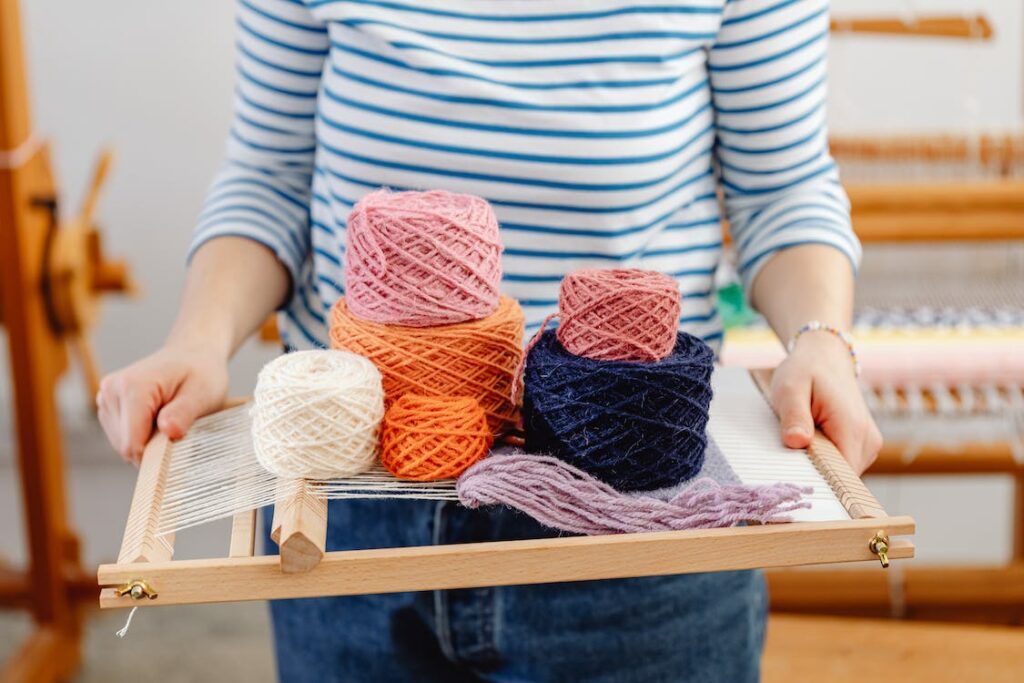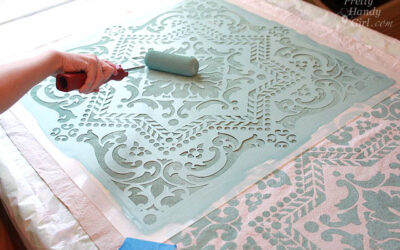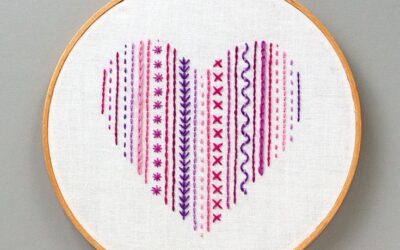What is Weaving Art?
Weaving is one of the oldest forms of art that involves interlacing yarn or other materials to create a fabric. It is an ancient technique that has been used for centuries to create clothing, blankets, and other decorative items. Weaving can be done on a variety of looms – from small handheld frames to large industrial machines.
There are many different types of weaving techniques, including plain weave, twill weave, and satin weave. Each technique produces a distinct pattern in the woven fabric. Weavers can also use different colors and textures of yarns to create unique designs.
Weaving as an art form has gained popularity in recent years as people have become more interested in traditional crafts and handmade goods. It offers an opportunity for self-expression and creativity while also preserving a rich cultural heritage. For beginners looking to explore this ancient craft, there are many resources available online and at local weaving shops to get started with their own weaving projects.
History of Weaving
Weaving has been an integral part of human civilization for thousands of years. The earliest evidence of weaving dates back to around 5000 BCE, with fragments of cloth found in Egypt and the Middle East. From there, weaving spread throughout the world, with different cultures developing their own unique styles and techniques.
One notable example is the intricate tapestries woven during the Renaissance period in Europe. These tapestries were often commissioned by wealthy patrons and feature elaborate designs depicting scenes from history or mythology. In Asia, silk weaving became a highly specialized art form, with skilled weavers creating delicate fabrics adorned with intricate patterns.
Weaving also played a crucial role in industrialization, as machines were developed to speed up the production process. Today, modern technology has made it easier than ever for anyone to learn how to weave and create their own unique pieces of textile art. Whether you’re interested in traditional techniques or cutting-edge innovations, there’s never been a better time to explore the rich history of weaving!
Materials Needed for Weaving

When it comes to weaving, there are a few essential materials that you will need in order to get started. Firstly, you’ll need a loom – the device used to hold and weave your threads together. There are several types of looms available on the market, ranging from simple handheld versions to larger floor-standing models.
Next up is your yarn or thread. This is what you’ll be weaving through your loom in order to create your design. There are countless types and colors of yarn available, so choose something that appeals to you and fits with the project you have in mind.
Other helpful materials include a shuttle (used for passing thread back and forth through the warp threads), scissors (for cutting yarn), and tapestry needles (for weaving in loose ends). With these basic supplies on hand, you’ll be well-equipped to start exploring the art of weaving!
Different Types of weaving
Weaving is a textile art that involves interlacing two sets of yarn or threads at right angles to create fabric. There are different types of weaving, each with its unique characteristics and techniques. One type of weaving is tapestry weaving, where the weaver creates an image or design by interweaving colored yarns. Tapestry weaving is known for its intricate designs and vibrant colors.
Another type of weaving is rug-making, which involves creating a thick, durable textile that can withstand foot traffic. Rug weavers use various materials like wool, cotton, and silk to make their creations. A third type of weaving is basketry, where the weaver uses natural materials such as reeds or grasses to create baskets in different shapes and sizes.
Overall, there are many different types of weaving that offer endless possibilities for creative expression. Whether you’re interested in creating tapestries or rugs or baskets, learning how to weave can be a rewarding experience for beginners and experts alike!
Difference between warp and weft stop motions in weaving

Warp and weft stop motions are essential parts of any weaving loom. The warp is the set of vertical threads that run through the length of the fabric, while the weft is the horizontal thread that runs through the width. A stop-motion mechanism is used to control these threads during weaving.
The warp stop motion prevents excess tension on individual warp threads by stopping the loom when a thread breaks or becomes slack. This ensures that each warp thread remains at a consistent level of tension throughout the weaving process, which contributes to a more uniform weave.
On the other hand, weft stop motions prevent too much or too little weft from being woven into each section of fabric. They work by either holding back or releasing wefts as necessary to keep them in line with one another and create an even weave pattern.
Both warp and weft can be visible in the final product. By spacing the warp more closely, it can completely cover the weft that binds it, giving a warp-faced textile such as weave. Conversely, if the warp is spread out, the weft can slide down and completely cover the warp, giving a weft-faced textile, such as a rug. There are a variety of loom styles for hand weaving and tapestry.
In conclusion, understanding how these two types of stop motions work are crucial for any beginner in weaving art. Proper use and maintenance can ensure that your finished product will have consistent quality and durability regardless if it’s a rug or clothing item.
Basic weaving techniques for beginners
One of the most important things to consider when starting weaving as a beginner is the type of loom that you will use. For beginners, it is best to start with a simple frame loom or lap loom. These types of looms are easy to use and do not require any additional equipment.
Another basic weaving technique for beginners involves choosing the right yarns and fibers. It is essential to choose quality yarns that have different textures, weights, and colors for your weaving projects. You can also experiment with different materials such as cotton, wool, silk, and linen.
When it comes to actual weaving techniques, one of the most fundamental skills is creating a plain weave. To achieve this weave pattern, you need to alternate between passing your weft thread over and under each warp thread on your loom. This creates a tight and even woven fabric that can be used for various projects such as scarves or placemats. As you become more confident with plain weave techniques, you can also try more complex patterns such as twill or basketweave designs.
Plain weave
Plain weave is the most basic and simplest form of weaving. It is created by interlacing yarns over and under each other in a perpendicular manner, forming a stable and uniform fabric. The warp threads are stretched vertically on the loom, while the weft threads run horizontally through them to create a woven textile. Plain weave can be identified by its checkerboard-like pattern with equal-sized squares.
This type of weave is versatile and can be used with different types of fibers such as cotton, wool, silk, or synthetic materials. Its plain structure makes it easy for beginners to learn how to weave since it requires less technical skills than other techniques like twill or satin weaves. Plain weave fabrics are also durable and breathable, making them ideal for creating everyday clothing items like shirts, dresses, or blouses.
Despite its simplicity, the plain weave has been used throughout history in various cultures across the world to create different textiles such as blankets, rugs, towels, or even ceremonial garments. In summary, the plain weave may seem ordinary at first glance but it is an essential technique that forms the foundation for more complex weaving patterns and designs.
Twill weave
Twill weave is a popular weaving technique used to create a variety of fabrics, including denim, gabardine, and herringbone. Unlike plain weave fabric where each weft yarn passes alternately over and under each warp yarn, twill weave produces diagonal lines on the surface of the fabric by passing the weft yarn over two or more warp yarns and then under one or more warp yarns. This pattern creates a unique texture that makes twill fabrics highly durable and resistant to wrinkles.
Twill fabrics come in different weights depending on the thickness of the threads used in weaving. Heavyweight twills are commonly used for upholstery, workwear, and military uniforms because they are sturdy and long-lasting. Lightweight twills are perfect for dressmaking as they drape well and have a smooth finish that is comfortable to wear against the skin. Twill is also an excellent choice for home decor items such as curtains, tablecloths, and napkins because it can withstand frequent washing without losing its quality.
Learning how to weave using twill techniques requires some practice but can be mastered quickly with dedication. It’s essential to choose suitable materials that work well with this technique since not all types of thread can produce good results when woven in this way. Once you get started with your project using twill weave techniques, you will discover that there are countless possibilities for creating beautiful fabrics that suit your needs!
Satin weave
Satin weave is one of the most popular and luxurious weaves in the textile industry. This type of weave is characterized by a smooth and shiny surface, which makes it ideal for creating high-end fabrics such as satin, silk, and sateen. The satin weave is created by passing the weft yarn over several warp yarns before going under one or more warp yarns, which results in a looser tension that allows for a more lustrous appearance.
Unlike other weaving techniques like twill or plain weave, satin requires specific yarns to achieve its signature look. The warp yarns are usually made from long-staple fibers like silk or cotton while the weft yarn can be made from any fiber. Satin fabrics are known for their excellent draping qualities due to their loose structure that allows them to flow smoothly without creasing.
Satin fabrics have been used since ancient times and continue to be popular today in evening gowns, bedding sets, and even upholstery materials. However, the satin weave is not easy to produce because of its complex structure that requires precision during weaving. Nonetheless, with the right skill set and equipment, anyone can create beautiful satin fabrics using this weaving technique.
Basketweave
Basketweave is a popular weaving technique that has been used for centuries to create beautiful baskets, mats, and other woven items. It is an over-under pattern that creates a checkerboard-like design, giving the finished product a unique and attractive appearance. The basket weave technique can be done with a variety of materials such as yarn, twine or even fabric strips.
To get started with basket weaving, you will need some basic tools like a loom or frame to hold your work in place. You will also need your chosen material and some basic knowledge of how to use the over-under pattern to create the distinctive weave. Once you have mastered the basics of basket weaving, you can start experimenting with different colors and textures to create truly stunning pieces.
Overall, basket weaving is an excellent way to explore your creative side while also learning a valuable new skill. Whether you want to make practical items like baskets and mats or just enjoy creating something beautiful for its own sake, basket weaving is definitely worth exploring as an art form. So why not give it a try today?

Project Ideas for Beginners
Weaving is a form of art that has been around for centuries. For beginners, it can seem overwhelming to start weaving, but with the right project ideas, anyone can create beautiful woven pieces. A simple beginner’s project could be a woven wall hanging. To get started on this project, all you need is some yarn or fabric strips and a weaving loom.
Another great beginner’s project idea is a woven scarf or shawl. This requires a little more skill than wall hanging but can still be achieved by beginners. The materials needed are similar to the wall hanging and require a loom for weaving.
Lastly, another idea for beginners would be to weave baskets out of natural materials such as reeds or grasses. Baskets are functional pieces of art that can be used in everyday life and make great gifts! These projects may take some time and effort, but with patience and practice, anyone can learn to weave beautiful pieces of art.
Moving Beyond the Basics
Once you’ve learned the basic techniques of weaving, it’s time to start exploring more complex patterns and designs. One way to do this is by adding texture to your weavings. Experiment with different types of yarns and fibers, such as wool or silk, to create varying textures within your piece.
Another way to move beyond the basics is by incorporating alternative materials into your weaving. Consider using strips of fabric or even unconventional objects like feathers or beads. These additions can add unique touches of personality and creativity to your work.
Lastly, don’t be afraid to experiment with color in your weavings. Mix and match different hues and shades to create stunning visual effects that are sure to captivate viewers’ attention. Remember, once you’ve mastered the basic techniques of weaving, there’s no limit to what you can create!
Conclusion: Weave Your Own Story
In conclusion, weaving is a form of art that allows one to express their creativity through the use of yarn and various weaving techniques. As a beginner weaver, it can be overwhelming to choose which technique or project to start with. However, don’t let this discourage you from weaving your own unique story through your creations.
Weaving allows for endless possibilities and encourages experimentation. Don’t be afraid to mix different colors and textures of yarn or even try out new patterns. Each creation tells its own story, whether it’s the colors used or the design itself.
Through this journey of learning how to weave, you will discover not only your personal style but also gain patience and focus as each project takes time and attention to detail. So go ahead and weave your own story – who knows where it might take you!










0 Comments